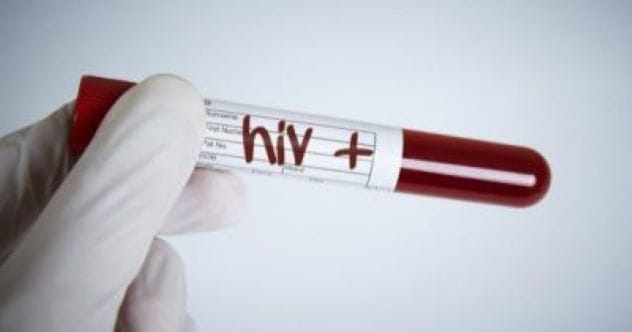Living through challenging times can often feel overwhelming, with news cycles that sometimes seem to offer little respite. Yet, humanity has faced significant health crises before and emerged with resilience. For decades, the world has been engaged in a critical battle against HIV/AIDS. While this fight is far from over, it’s a field rich with stories of incredible breakthroughs, unwavering dedication, and inspiring victories. These narratives remind us of the power of science, community, and the human spirit. Let’s explore ten such uplifting stories that shine a light on the progress being made.
10 Gene Editing Helps Cure Mice
While gene editing sparks debate, its potential in the fight against HIV is undeniable. In a significant 2020 study, scientists demonstrated a method to eliminate HIV in mice. The research involved a combination of slow-release antiretroviral drugs and a sophisticated gene-editing technique. While neither treatment was effective alone, together they successfully cleared the virus in a notable portion of the 23 mice tested. Dr. Howard E Gendelman, involved in the study, highlighted this as a first in showing viral eradication in a live animal model. Current antiretroviral drugs help manage HIV but don’t cure it; this research points to a more definitive future where symptoms wouldn’t return if medication stopped.
9 Monthly Injections Could Replace Pills
Daily pills are a constant for many people living with HIV. However, this could change thanks to a new development. Scientists in California have created a monthly injection that offers a new way to manage the virus, potentially proving more effective than daily pills. This injection, administered into the buttock, allows medication to remain between muscle fibers and slowly soak into the bloodstream. Early trial results are promising, with 94% of participants maintaining stability after two years. UN health expert Mahesh Mahalingam noted this could significantly improve quality of life by removing the daily pill burden.
8 “Dusseldorf Patient” Cured after Bone Marrow Transplant
In 2019, hope surged as a patient in Germany, known as the “Dusseldorf Patient,” became the third person in history to be declared cured of HIV following a bone marrow transplant. Though details about the patient are kept private, doctors announced at a Seattle conference that the individual had been off medication for three months and remained HIV-free. Scientists confirmed this by studying tissue from lymph nodes and the gut. This advanced treatment replaces infected cells with healthy ones, a potential first realized with Timothy Ray Brown, the “Berlin Patient,” in 2007.
7 Protests Against Mbeki’s Denial in South Africa
Post-apartheid South Africa faced a rampant HIV crisis. By the mid-1990s, over 1.5 million people were HIV-positive, overwhelming hospitals and leading to countless infected newborns. Tragically, then-President Thabo Mbeki controversially dismissed scientific evidence, advocating for treatments like garlic and beetroot over proven medication and even banning access to drugs preventing mother-to-child transmission. This stance is estimated to have cost 300,000 lives. However, the South African people courageously protested. The Treatment Action Campaign successfully took legal action in 2001, forcing the government to allow pregnant women access to vital medication. This pivotal moment dramatically improved public health, increasing life expectancy and reducing child mortality, marking a significant turnaround after Mbeki’s resignation in 2008.
6 PrEP Prevents Infection
The adage “prevention is better than cure” holds particularly true for HIV/AIDS, for which a universal cure remains elusive. Over the last fifteen years, researchers have made tremendous strides with Pre-Exposure Prophylaxis (PrEP). This daily drug regimen dramatically reduces the risk of contracting HIV, nearing almost zero. Initially targeted at specific groups like sex workers and intravenous drug users, successful trials led the World Health Organization to recommend PrEP for anyone at substantial risk. Countries like the U.S., Brazil, and Thailand have rolled out PrEP programs, with Thailand notably offering free access regardless of age or gender.
5 HIV-Positive Sperm Bank Opens in New Zealand
In a groundbreaking initiative to combat stigma, New Zealand launched Sperm Positive, the world’s first HIV-positive sperm bank, in 2019. This project, a collaboration between Positive Women Inc, Body Positive, and the New Zealand Aids Foundation, features donors who are HIV-positive but have an undetectable viral load. This critical detail means there’s no risk of transmitting the virus to a child conceived using their sperm. The initiative aims to educate the public, challenge misconceptions about HIV, and reduce the social shame often associated with the virus, fostering a more informed and compassionate society.
4 Brighton’s HIV Test Vending Machine
Brighton, an English city, has faced significant challenges with HIV, holding the highest rate outside London (8 per 1,000 people, four times the national average). A 2016 study revealed nearly one-fifth of Brighton’s HIV-positive individuals were unaware of their status. In response, the city council committed to zero new infections. A key innovation was installing HIV testing kit vending machines across the city, a world-first. The Martin Fisher Foundation placed five machines in venues frequented by high-risk groups in 2017. These machines are crucial in lowering infection rates, and some have been upgraded to full Sexual Health Machines, offering STI kits too. Inspired by Brighton, cities like Glasgow and London have also pledged to eradicate new infections.
3 Cyclists Help HIV-Positive Sex Workers in Zimbabwe
The COVID-19 pandemic created severe hardships globally, particularly for vulnerable groups like HIV-positive sex workers in rural Zimbabwe. National lockdowns cut off access to essential services for remote communities. In Mashava village, four hundred HIV-positive sex workers found themselves unable to reach the nearest clinic for their medication, sometimes turned away by police enforcing lockdown. In a remarkable display of community spirit, Dorcas Mbiri and her colleagues organized. They borrowed bicycles, and once a week, a cyclist undertook the challenging 10km journey over poor roads to collect vital medication for the villagers, providing a lifeline during a desperate time.
2 Woman Free of HIV for Twelve Years without Medication
An extraordinary case emerged in 2015 involving a young woman born with HIV who tested negative twelve years after stopping her medication. Treated with antiretroviral drugs as an infant, her family ceased treatment when she was six. A year later, doctors found no trace of the virus. Eleven years passed, and as an adult, she tested negative again, astounding medical professionals. This was the longest recorded period a young person has remained virus-free without medication. Dr. Scott Sieg, an infectious disease expert, noted this case “provides new hope,” especially considering other infant treatment cases haven’t had such positive long-term outcomes.
1 DNA-rTV, China’s Potential HIV Vaccine
The quest for an HIV vaccine is ongoing, and researchers in China have made promising headway with DNA-rTV. This potential vaccine, which completed its second phase of clinical trials in 2019, has shown positive initial results. DNA-rTV is a replicating viral vector vaccine. This means the vaccine particles can reproduce, enter body cells, and prompt the production of antigens. These antigens are crucial for immunity, as they trigger the immune system to create antibodies. If an immunized person later encounters HIV, these antibodies would help fight off the virus. Developing an HIV vaccine is incredibly complex, and experts caution against expecting it soon. Jin Cong, director of China’s AIDS Prevention Office, emphasized that vaccine development is a long process, especially for a virus as challenging as HIV.
The journey in combating HIV/AIDS has been long and challenging, yet it’s filled with moments of remarkable innovation and human spirit. These ten stories represent just a fraction of the incredible efforts worldwide. From cutting-edge scientific research to grassroots community initiatives, the dedication to overcome this virus, reduce stigma, and improve lives is truly inspiring. Each step forward, no matter how small it may seem, brings us closer to a future where HIV is no longer a global threat. The fight continues, fueled by hope and the unwavering belief in a healthier tomorrow for everyone.
Which of these stories inspires you the most? Do you know of other breakthroughs in the fight against HIV? Leave your comment below and join the conversation!










